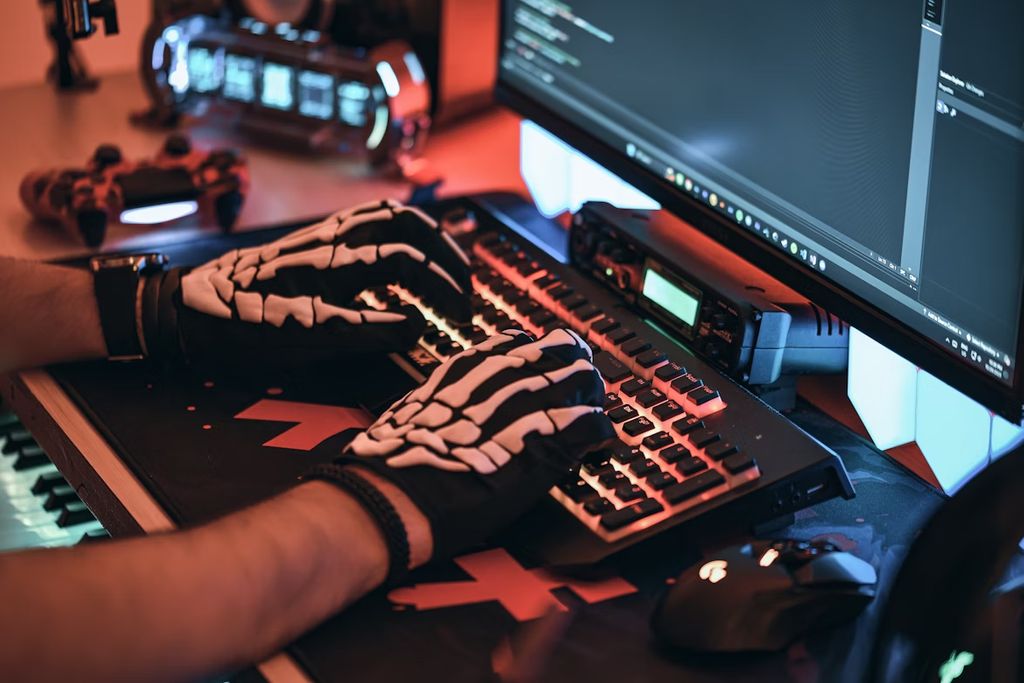How Gaming Gloves Are Changing Player Interaction
Oct 21, 2025 • 3 views
Digital play has moved far beyond keyboards and controllers. New accessories are being developed to make interaction feel more natural, and one of the most promising tools is the gaming glove. By tracking hand and finger movements, these gloves allow actions in the physical world to be reflected on screen. Some models even use haptic feedback to give a sense of touch. In this article, we’ll look at how gaming gloves work, where they are already used, the challenges they face, and what role they might play in the future.

The Mechanics of Gaming Gloves
The data concerning the movements and reaction of the hands are registered by gaming gloves. Instead of the player pressing buttons, he can use gestures, and the gloves will convert them into a digital signal. The most used technologies include:
Real time tracking of the motion and angle of the hands
Pressure detection that measures how firmly the player grips or presses
Finger recognition that identifies gestures such as pointing, pinching, or swiping
Haptic feedback that creates vibrations or resistance to simulate touch, impact, or even weight
These functions allow a player to pick up a virtual object and feel tension in the glove, giving the sense of holding something solid. Most models are built to work with VR and AR systems, while some also connect to PCs and consoles through software. The purpose is not always to replace traditional controllers, but to offer a more natural way of interacting by turning real movements into actions on screen.
Main Applications in Gaming and Esports
Gaming gloves are also beginning to enter various types of play. They also allow players to pick, toss or point at objects in a virtual reality, without the use of a controller, just by moving their hands. In the case of esports, precision is the key aspect, as gloves are capable of detecting minute responses that count in the games where speed is the deciding factor. Hand-tracking is also being tested on some smaller titles, which provide players with an alternative method of interaction without the need to press buttons.
Another area where gloves could fit is the casino game show format. These shows combine live presenters with digital features, and today most interaction happens through clicks or taps. With gloves, players could use gestures to select an option, confirm a bet, or signal a choice to the host. This type of input could make participation feel more direct and visible to everyone watching. The main idea is simple: turning natural movement into control, even if software support and compatibility still limit how widely the technology can be used.
Practical Roles Beyond Gaming
Gloves built for digital play are also being applied in contexts where movement tracking can serve health and training goals. Instead of focusing on entertainment, the technology captures how the hands respond under specific conditions. Some of the main areas are:
Fitness games that record grip strength, finger motion, and repetition speed. This allows training programs to adjust to the player’s ability.
Sports practice where gloves track the angle of a swing, the grip quality, or the reaction speed. Coaches can use this data to review and refine technique.
Rehabilitation sessions where patients recovering from injury or surgery use gloves to rebuild mobility. Therapists can follow progress step by step, from basic finger movement to stronger muscle control.
In each case, the value lies in precision. The gloves turn small actions into data that can shape training schedules, guide recovery, and support steady improvement.
Challenges and Barriers to Wider Adoption
Even though gaming gloves bring new ways to interact with digital systems, they face several problems that prevent wider use. These problems are both technical and practical, affecting cost, comfort, and adoption.
These issues explain why gloves remain a niche product rather than a common accessory. For adoption to grow, prices must fall, comfort must improve, and stronger integration with platforms and software is needed.

Future Development and Potential
The direction of gaming gloves is moving toward designs that feel lighter, easier to wear, and free from cables. Researchers are testing new materials and wireless systems that could reduce strain and make gloves suitable for longer use. Another step is combining gloves with other wearables, such as AR glasses or motion suits, so that full-body movement can be tracked and linked to digital spaces instead of just hand gestures.
Two conditions matter most for the technology to spread: lower prices and broader platform support. If gloves cost much more than a regular controller and work with only a few titles, their use will stay limited. If costs fall and major platforms adopt them, gloves could expand into new fields beyond gaming. Sports training, medical education, and industrial simulations are examples where precise movement tracking has real value and could turn this tool into something more than an accessory for play.
Closing Thoughts
Gaming gloves highlight how physical movement is being brought into digital play. They already have uses in gaming, esports, training, and rehabilitation, showing that the technology can go beyond entertainment. The main hurdles remain: high cost, comfort during long use, and limited support from major platforms. Because of this, gloves are unlikely to replace standard controllers soon. Even so, they represent a step toward more natural ways of interacting with digital systems, where gestures and hand motions become as crucial as pressing buttons.
